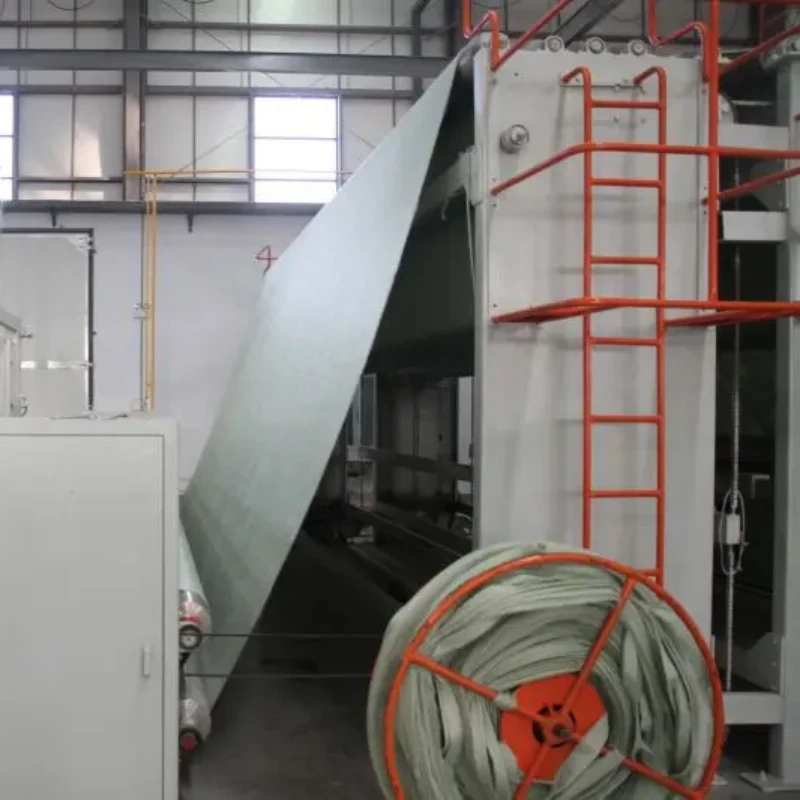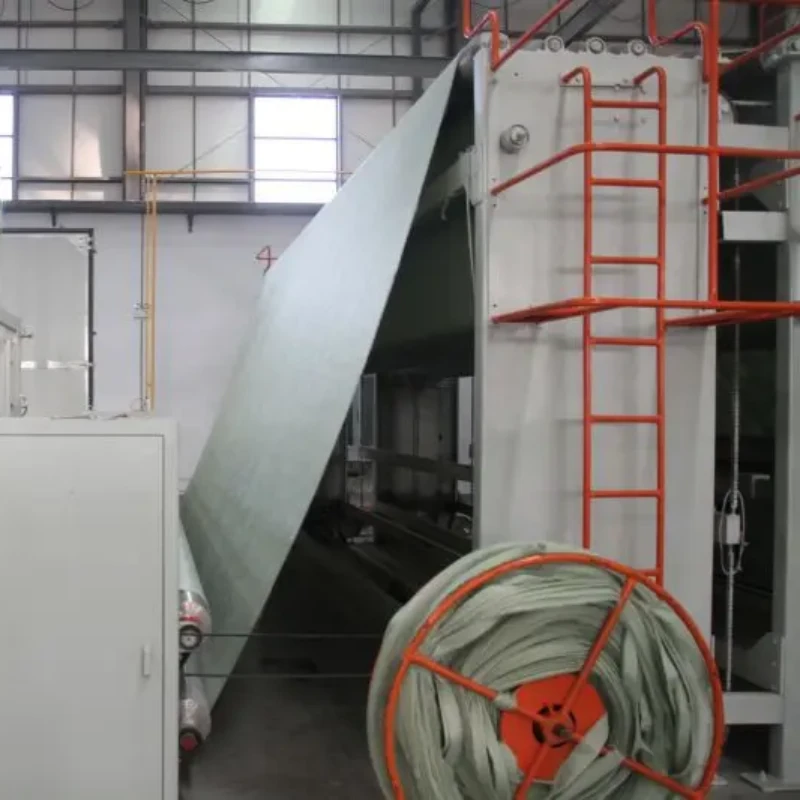Non-Woven Geotextile Landscape Fabric: Essential for Landscape Projects
Non-woven geotextile landscape fabric is a versatile material used in various landscaping applications, from erosion control to drainage enhancement. It provides significant benefits in landscaping by preventing soil erosion, improving water drainage, and supporting long-term structural integrity in outdoor projects. This article will discuss the features, benefits, and uses of non-woven geotextile fabric, highlighting its practical advantages and supported by research data.
What is Non-Woven Geotextile Landscape Fabric?
Non-woven geotextile landscape fabric is a type of synthetic fabric made from polypropylene, polyester, or a blend of both. It is constructed through a needle-punched method or spunbonding, resulting in a strong, durable material that allows water to flow through while preventing soil from escaping. This type of geotextile fabric does not use traditional weaving techniques, which is why it's referred to as "non-woven."
The fabric is designed to perform multiple functions, including:
Erosion control: Prevents soil erosion on slopes, hillsides, and around plant beds.
Drainage: Allows water to filter through while maintaining soil structure.
Separation: Keeps different layers of materials (such as soil and gravel) from mixing.
Reinforcement: Provides extra strength to support structures or surfaces under load.
Types of Non-Woven Geotextile Fabrics
Needle-Punched Non-Woven Geotextile: This fabric is created by interlocking fibers using barbed needles. It is commonly used in applications requiring moderate filtration and drainage properties.
Spunbond Non-Woven Geotextile: Created by spinning fibers together, spunbond fabric offers higher tensile strength and durability, making it suitable for more demanding projects.
Benefits of Non-Woven Geotextile Landscape Fabric
The adoption of non-woven geotextile landscape fabric has seen significant growth in recent years due to its numerous benefits. Let’s explore some key advantages.
1. Erosion Control
Erosion control is one of the primary applications for geotextile fabric. It is often used in landscaping projects such as slopes, embankments, and other areas prone to erosion caused by rain or wind. The fabric acts as a protective barrier, allowing water to flow through while holding the soil in place, thus preventing displacement.
2. Improved Drainage
Non-woven geotextiles improve drainage by allowing water to pass through while preventing soil compaction. This is particularly valuable in areas with heavy rainfall or poor soil drainage. By using non-woven fabric, landscapers can create areas that efficiently manage water flow without risking soil erosion or waterlogging.
3. Weed Control
The landscape fabric serves as a barrier to prevent the growth of weeds. Since it allows water and air to pass through while blocking sunlight, it inhibits weed seeds from germinating. This can reduce the need for harmful chemical herbicides and maintenance costs.
4. Separation and Filtration
Non-woven geotextile fabric is widely used to separate different materials, such as gravel and soil, to prevent them from mixing. It also serves as a filter, allowing fine particles in water to pass through while trapping larger particles, ensuring that water flows smoothly without clogging drainage systems.
5. Reinforcement
The fabric provides added strength and support to areas that require reinforcement, such as under pavements or patios. Its tensile strength helps stabilize the ground and prevent surface cracking or subsidence.

The picture shows the production scene of non-woven geotextile landscape fabric. Non-woven geotextile landscape fabric is often used in garden landscape and other projects. It has the functions of isolation, filtration, drainage, etc., and provides practical material support for related projects.
Research and Data on Non-Woven Geotextile Fabric Performance
To fully appreciate the value of non-woven geotextile fabric, it’s essential to understand its performance characteristics, which can vary based on fiber type, weight, and fabric structure. Below are some key parameters that influence its effectiveness in different landscaping applications.
Key Physical Properties of Non-Woven Geotextile Fabric
| Property | Needle-Punched Fabric | Spunbond Fabric |
|---|---|---|
| Tensile Strength (N/5cm) | 20-40 | 40-80 |
| Water Permeability (L/m²/s) | 40-120 | 50-150 |
| UV Resistance (%) | 50-70 | 60-85 |
| Thickness (mm) | 0.8-3.0 | 0.5-2.5 |
| Weight (g/m²) | 100-600 | 100-500 |
Source: Research data collected from industry studies and manufacturers.
Effectiveness of Non-Woven Geotextile Fabric in Erosion Control
| Slope Angle (degrees) | Erosion Reduction (%) |
|---|---|
| 15 | 65 |
| 30 | 80 |
| 45 | 85 |
| 60 | 90 |
Source: Study on geotextile performance for erosion control in hilly areas.
Water Filtration Efficiency of Non-Woven Geotextile
| Particle Size (microns) | Filtration Efficiency (%) |
|---|---|
| 0-10 | 85 |
| 10-50 | 90 |
| 50-100 | 93 |
Source: Performance testing for filtration in landscaping projects.
How Non-Woven Geotextile Landscape Fabric Works in Landscaping Projects
1. Garden Beds and Flower Beds
Using non-woven geotextile fabric in garden beds helps maintain healthy soil structure. The fabric prevents the mixing of soil and mulch, reduces weed growth, and promotes good water drainage. Additionally, it provides the soil with proper aeration, promoting root growth for plants.
2. Erosion Control on Slopes
For slopes, geotextile fabric is a go-to material for stabilizing soil. Whether it’s used in landscaping around hillsides or in larger-scale civil engineering projects, the fabric prevents soil erosion caused by heavy rain or wind. It is especially valuable in areas with high rainfall or rapid water flow.
3. Driveways and Pathways
In areas where a solid base is required, such as driveways and pathways, non-woven geotextile fabric is used to separate the soil from gravel or other base materials. This separation ensures that the gravel does not mix with the soil, maintaining the integrity of the surface and preventing ruts from forming.
4. Drainage Systems
Non-woven geotextiles play a crucial role in drainage systems, especially in areas with poor natural drainage. The fabric allows water to pass through while preventing soil and other materials from clogging drainage pipes or systems. This enhances the longevity and efficiency of the drainage system.
Installation of Non-Woven Geotextile Landscape Fabric
Proper installation of non-woven geotextile fabric is essential to ensure optimal performance. Here are the basic steps to follow:
Site Preparation: Clear the area of debris, weeds, and existing vegetation.
Fabric Layout: Roll out the fabric across the area, ensuring that it covers the soil completely. Overlap seams by 4–6 inches to ensure proper coverage.
Securing the Fabric: Use landscape pins or stakes to hold the fabric in place. For slopes, ensure the fabric is tightly secured to prevent movement.
Covering the Fabric: Depending on the application, cover the fabric with soil, mulch, gravel, or other materials.
Conclusion
Non-woven geotextile landscape fabric is a cost-effective, efficient, and durable solution for a variety of landscaping applications. Whether used for erosion control, drainage improvement, or reinforcement, its versatility makes it an essential material in modern landscaping. Supported by data on its physical properties, performance in erosion control, and filtration efficiency, it’s clear that non-woven geotextile fabric plays a pivotal role in enhancing the sustainability and functionality of landscaping projects.
If you are looking to incorporate non-woven geotextile landscape fabric into your project, consult with experts and suppliers who can provide you with the best fabric type suited to your needs.
About Haoyang Environmental Co., Ltd.
Haoyang Environmental Co., Ltd., established in 2008, is a leading provider of geosynthetic materials, specializing in research, development, and manufacturing. With expertise in environmental engineering consulting, soil remediation, and solid waste treatment, Haoyang supports sustainable development through innovative solutions. The company holds ISO 9001, ISO 14001, and OHSAS 18001 certifications, ensuring high-quality service. Haoyang’s cutting-edge R&D team focuses on developing environmental technologies, with several patents and scientific achievements to its name. For reliable geosynthetic materials and expert environmental solutions, Haoyang is your trusted partner. Please feel free to leave us a message.

897.webp)
942.webp)
237.webp)